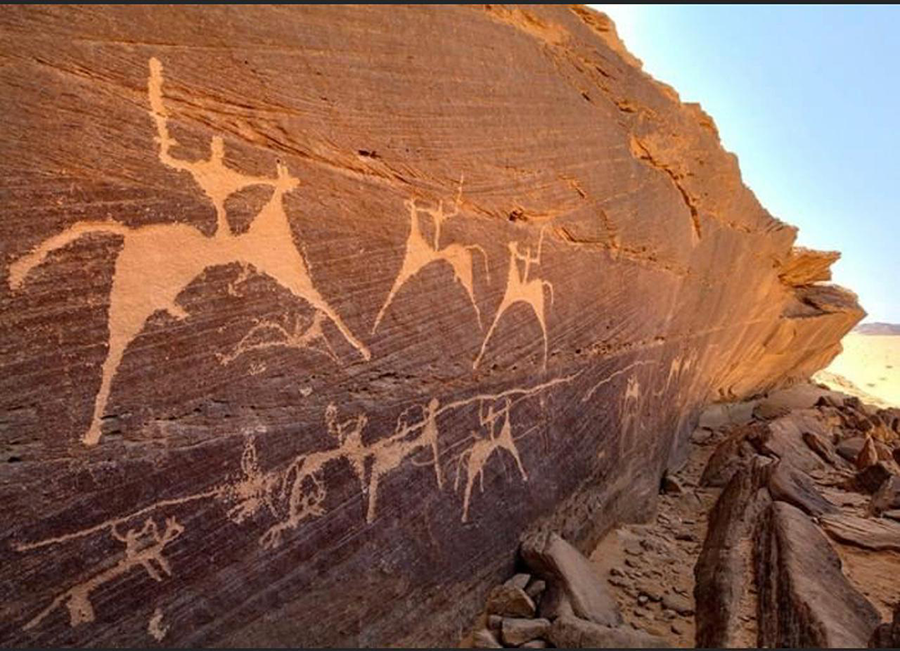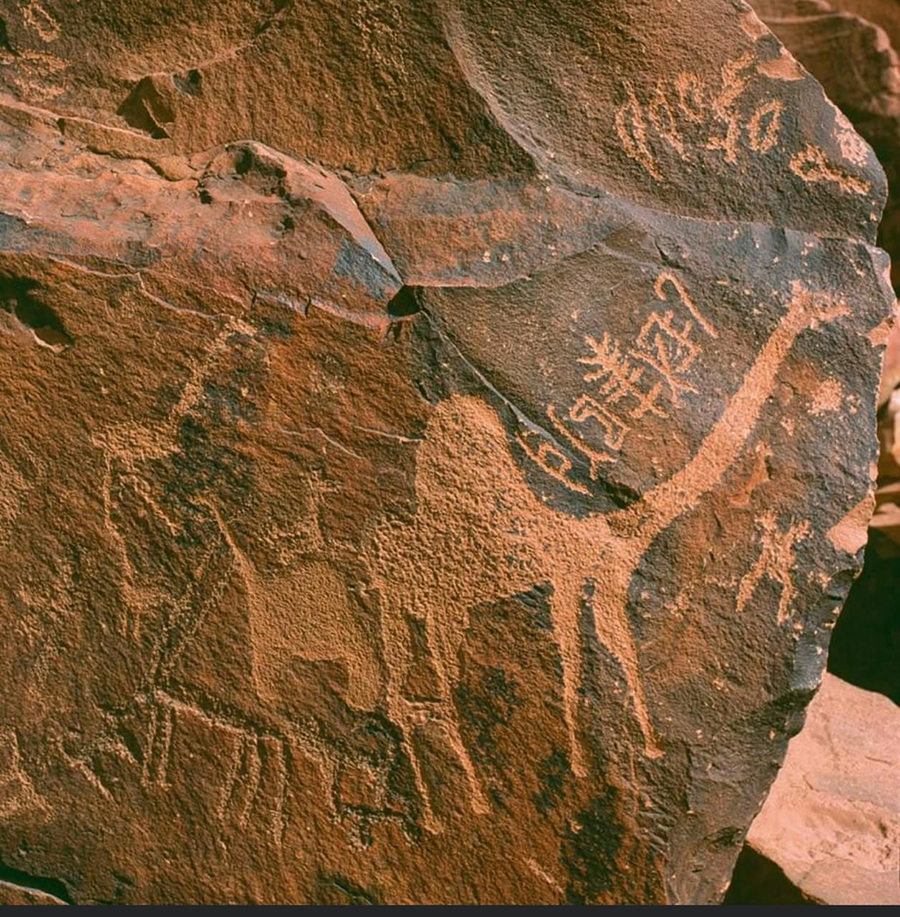MAKKAH: Saudi Arabia has a rich heritage depicted in the rock art sites scattered across the country. These show representations of religious, political and socioeconomic life since ancient times.
The engravings, some of which date back to 12,000 B.C., include many images of animals that were used by man for their milk, meat, skins and fur.
Dr. Salma Housawi, professor of ancient history at King Saud University, said that the rock art shows that the inhabitants of the southern part of the Arabian Peninsula began to hunt and domesticate animals in around 6,000 B.C.
“The dog was one of the first animals to be domesticated and used for hunting. Donkeys and bulls depicted in the drawings are also domesticated then,” she added.
Housawi noted that the rock paintings scattered in the northwest of the Arabian Peninsula, which date from 4000 to 2000 B.C., refer to the practice of hunting and grazing by the people of the region.

When the climate of Saudi Arabia became extremely hot and arid, cattle gradually disappeared and were replaced by animals that are more suited to the dry environment, such as camels, ibex and goats, particularly in the northern and western regions.
The professor said that camels were first depicted on the rocks of Kilwa northeast of Tabuk.
She said the camel was used for transportation due to its endurance and ability to sustain harsh desert conditions of the Arabian Peninsula, making it one of the most important animal resources.
“The camel is a food source and a means of transport that has played a major role in Arab relations with their neighbors, in addition to its participation in the wars.”

She noted that in the area of Jabal Al-Malihiya, 40 kilometers east of Hail, its rock facades have important inscriptions and drawings depicting cows, wild camels, ostriches and lions. She said that Saudi Arabia was keen to register the Hail rock paintings on the UNESCO World Heritage List because of these animal drawings.
“The Qassim area also abounds with animal drawings of ostriches, lions, lionesses, cows and camels, while in the Uyun Al-Jawa you can find drawings of predators, ibex, ostriches and camels,” she said. “Mount Tamiya in Uglat Asugour region also features drawings of camels and ibexes.” The rock art of the Al-Bukayriyah area features a fascinating drawing of a lion and lioness next to each other.
The rock art of the central region of the Dawadmi province, which shows a similar range of animals, includes aurochs, as well.
She also noted that rock drawings were also interesting for their hunting scenes, which illustrated accurately both the movement of the hunter and animal and the weapons used in hunting.
“The Ministry of Culture, represented by the Saudi Heritage Authority, is making a great effort to preserve and document archaeological and historical areas in the Kingdom, in cooperation with various foreign missions in accordance with the Kingdom’s Vision 2030,” Housawi said.




























